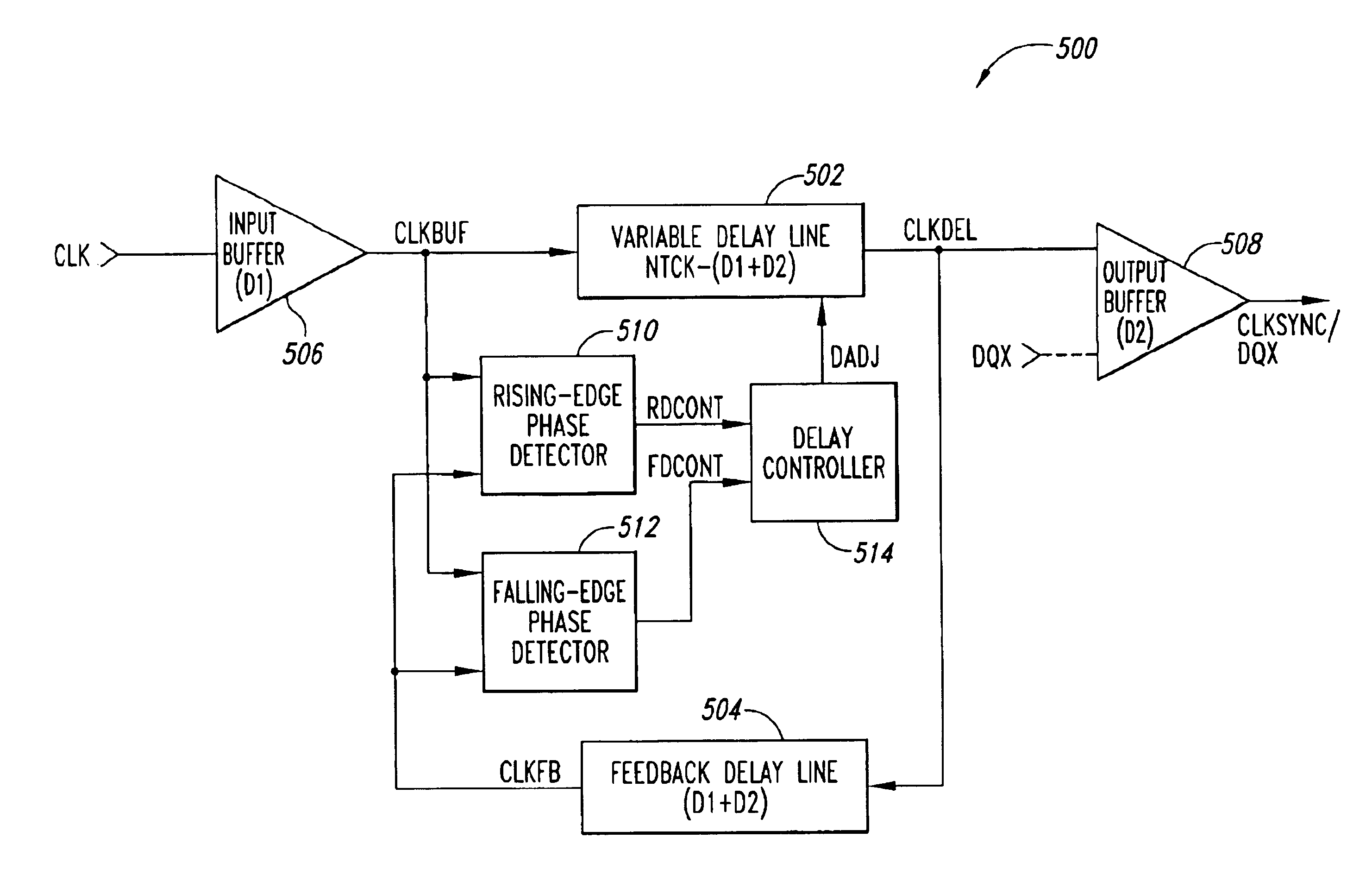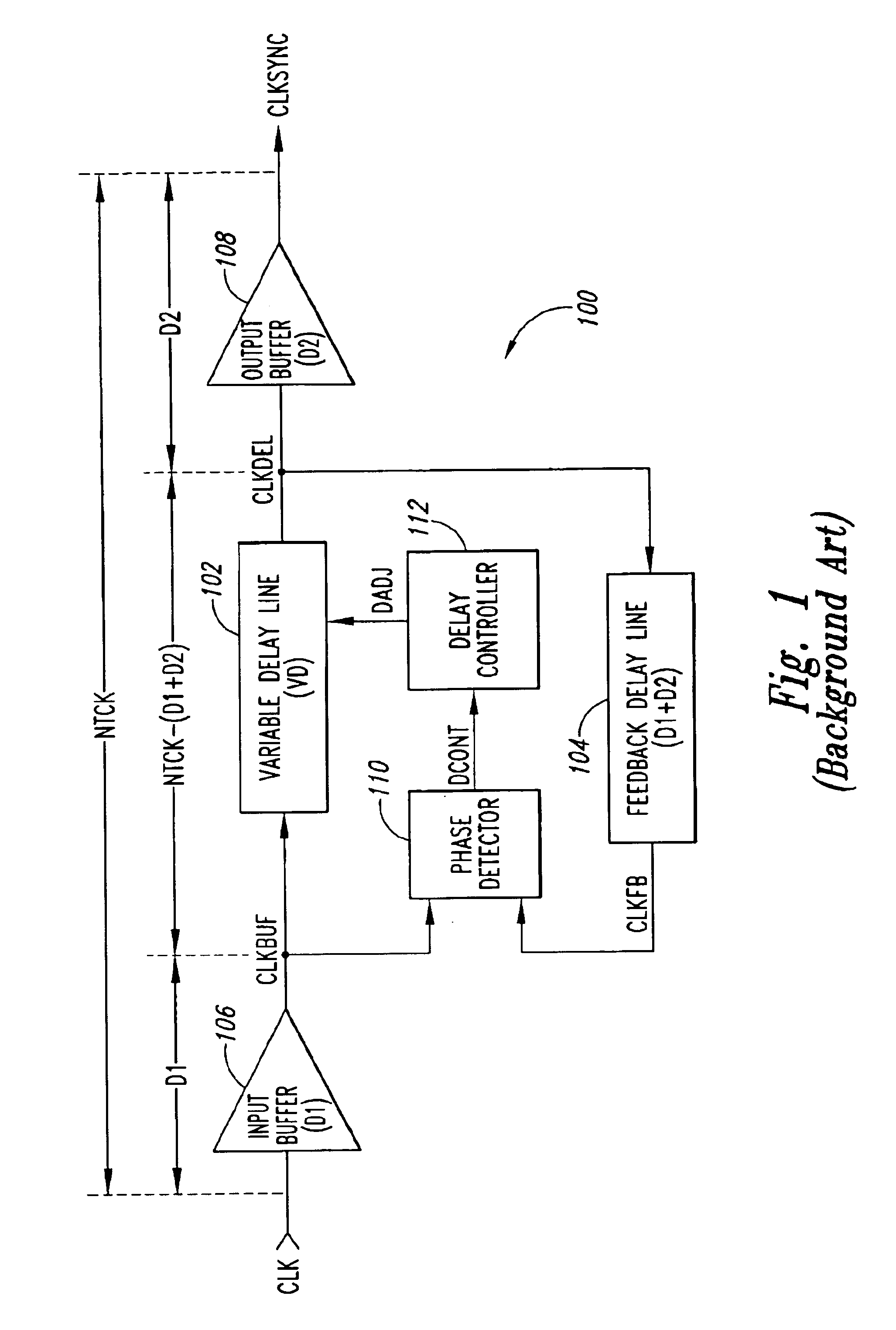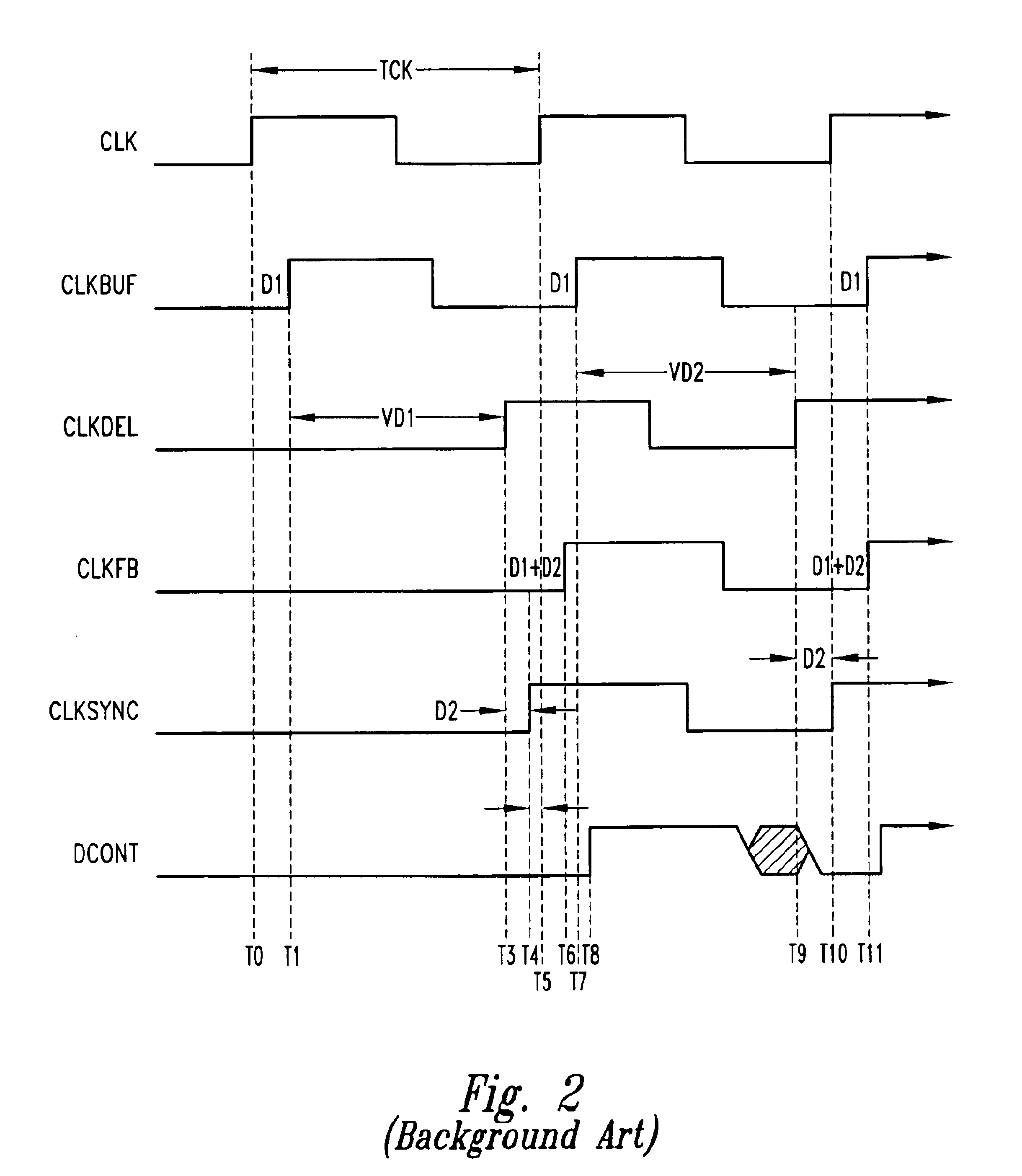Dual-phase delay-locked loop circuit and method
a delay-locked loop and loop circuit technology, applied in the field of integrated circuits, can solve the problems of increasing the time delay introduced by the internal circuitry, the internal clock signal to be phase shifted relative to the external clock signal, and the command applied to the memory device may no longer be valid
- Summary
- Abstract
- Description
- Claims
- Application Information
AI Technical Summary
Benefits of technology
Problems solved by technology
Method used
Image
Examples
Embodiment Construction
[0024]FIG. 3 is a functional block diagram of a delay-locked loop 300 including a clock multiplier 302 that multiplies a frequency of an applied external clock signal CLK, allowing a variable delay VD of a delayed clock signal CLKDEL to be adjusted multiple times during each cycle of the applied clock signal and thereby enabling the applied clock signal to be more quickly locked, as will be explained in more detail below. In addition to locking more quickly on the CLK signal, the delay-locked loop 300 also enables a smaller variable delay line 304 to be utilized over a given operating frequency range due to the increased frequency of the signal being locked, as will also be explained below in more detail. In the following description, certain details are set forth to provide a sufficient understanding of the invention. It will be clear to one skilled in the art, however, that the invention may be practiced without these particular details. In other instances, well-known circuits, co...
PUM
 Login to view more
Login to view more Abstract
Description
Claims
Application Information
 Login to view more
Login to view more - R&D Engineer
- R&D Manager
- IP Professional
- Industry Leading Data Capabilities
- Powerful AI technology
- Patent DNA Extraction
Browse by: Latest US Patents, China's latest patents, Technical Efficacy Thesaurus, Application Domain, Technology Topic.
© 2024 PatSnap. All rights reserved.Legal|Privacy policy|Modern Slavery Act Transparency Statement|Sitemap



